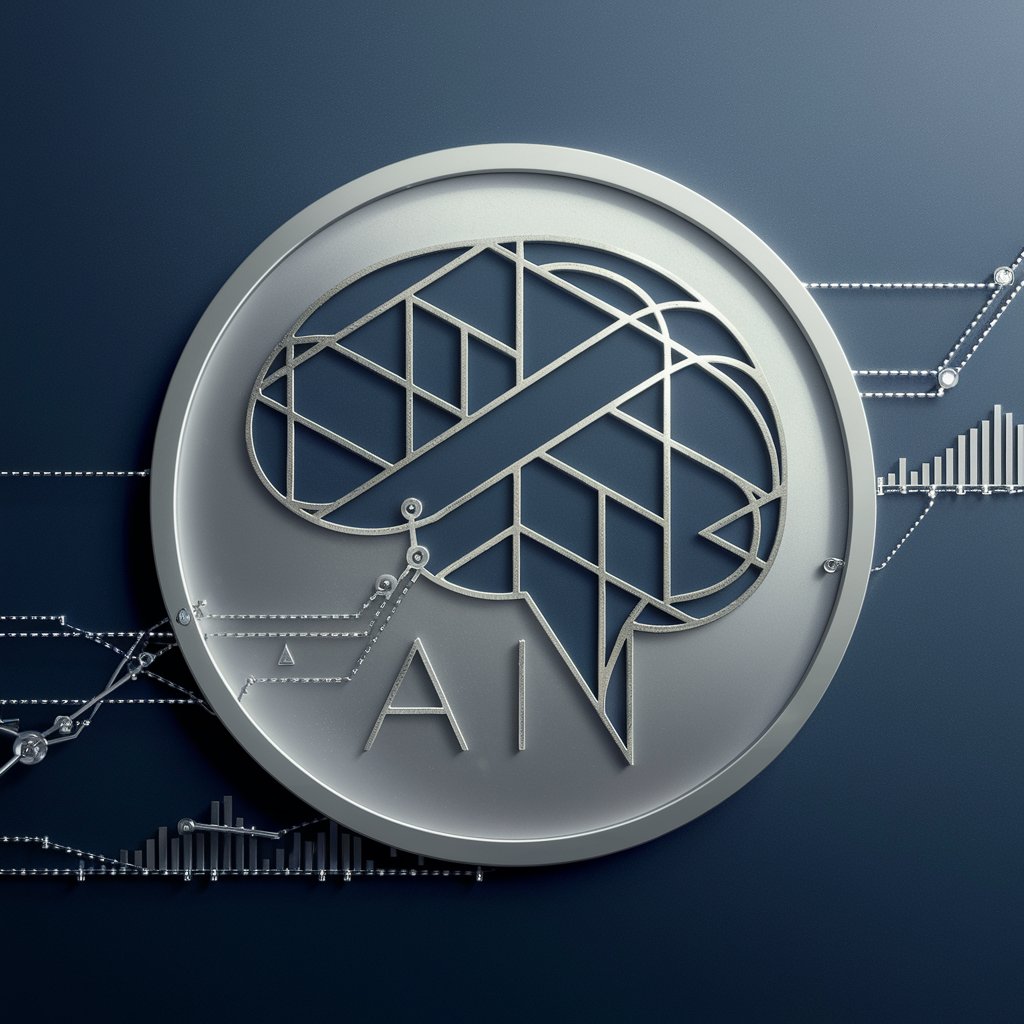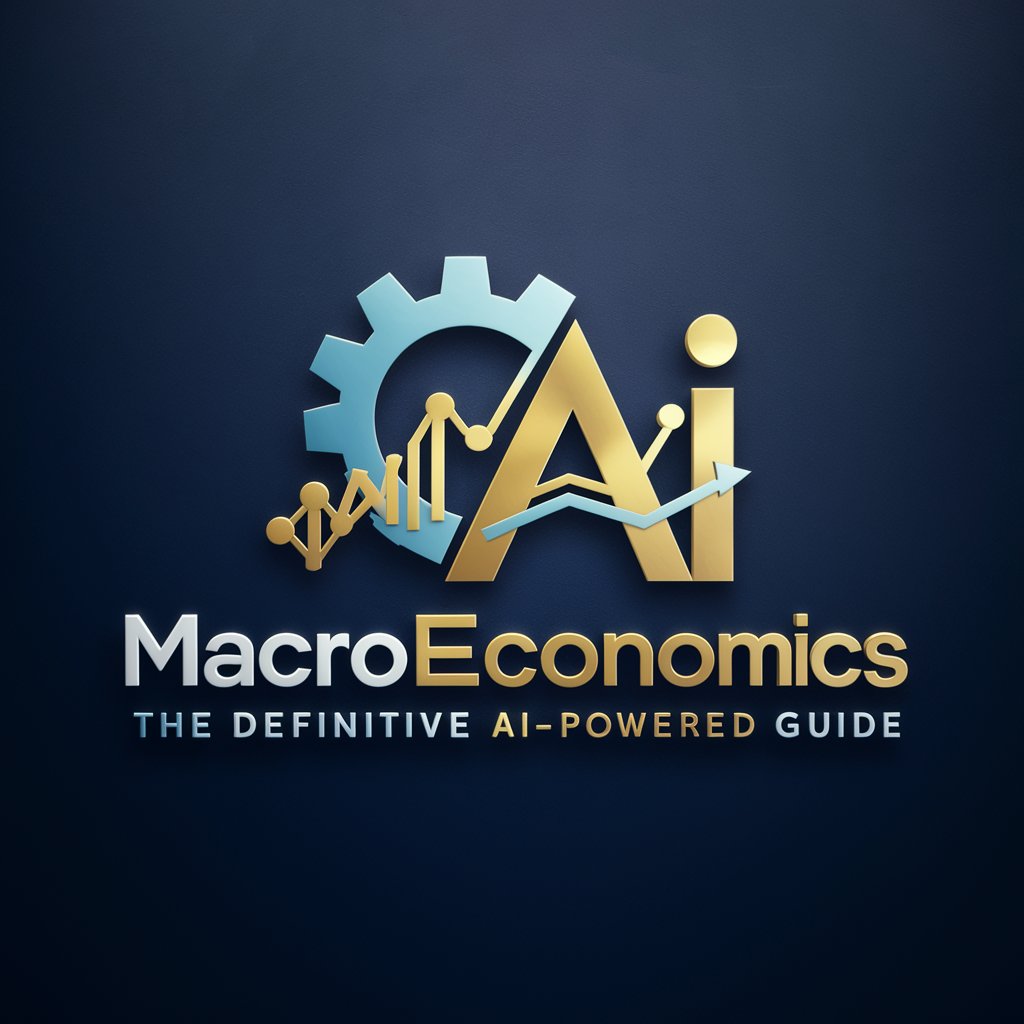
Macroeconomics - Macroeconomic Insights and Analysis

Welcome! Let's explore the intricacies of the global economy together.
Unlocking Economic Insights with AI
Explain the factors contributing to the current inflation trends worldwide.
How do central banks influence economic growth and stability?
Discuss the relationship between unemployment rates and economic cycles.
Analyze the impact of fiscal policy on national economies.
Get Embed Code
Understanding Macroeconomics
Macroeconomics is a branch of economics that focuses on the behavior, performance, structure, and decision-making of an economy as a whole, rather than individual markets. This includes national, regional, and global economies. Macroeconomics analyzes various aggregate indicators such as GDP (Gross Domestic Product), unemployment rates, and price indices to understand how the whole economy functions. It aims to develop policies that improve economic performance and health. For example, through the study of macroeconomics, one can understand the impact of fiscal and monetary policies on economic growth, inflation, and unemployment. It involves models and theories such as the Keynesian model, which emphasizes the role of government spending and aggregate demand in the economy, or the classical model, which focuses on the importance of free markets. Powered by ChatGPT-4o。

Core Functions of Macroeconomics
Analysis of Economic Growth
Example
Studying the long-term growth trends of economies to identify what factors contribute to sustained economic expansion.
Scenario
Economists may analyze the GDP growth rate of a country over several decades to determine the impact of technology, education, and policy reforms on its economic development.
Understanding Inflation and Deflation
Example
Exploring the causes and effects of changes in the price level within an economy.
Scenario
Macroeconomists examine the Consumer Price Index (CPI) to assess inflation trends and recommend policies to maintain price stability, such as adjusting interest rates.
Monetary and Fiscal Policy Analysis
Example
Evaluating the effectiveness of government spending and central banking policies on economic stability and growth.
Scenario
Analyzing how changes in the Federal Reserve's interest rate influence borrowing, spending, and ultimately, economic growth.
Employment and Unemployment Studies
Example
Investigating the dynamics of labor markets and the factors affecting employment levels.
Scenario
Researching the correlation between economic downturns and unemployment rates to design policies that encourage job creation.
International Economics and Trade
Example
Examining how global trade and finance impact economic growth and stability.
Scenario
Studying the effects of trade agreements on domestic industries and overall economic health.
Who Benefits from Macroeconomics?
Policy Makers and Government Officials
These users rely on macroeconomic analysis to draft and implement policies aimed at achieving economic stability, growth, and full employment. Understanding macroeconomic indicators helps them make informed decisions on taxation, government spending, and monetary policy.
Economic Researchers and Academics
Researchers and academics use macroeconomic theories and models to study economic phenomena, test hypotheses, and contribute to the body of economic knowledge. This informs educational content and fosters a deeper understanding of economic principles.
Business Executives and Managers
Business leaders use macroeconomic data to make strategic decisions, such as expanding into new markets or adjusting to economic cycles. Insights into economic trends help them position their companies for growth and competitive advantage.
Investors and Financial Analysts
Investors and analysts rely on macroeconomic indicators to assess market conditions, predict economic trends, and make investment decisions. Understanding the macroeconomic environment is crucial for portfolio management and financial planning.
General Public
Everyday citizens can use macroeconomic knowledge to make informed personal financial decisions and understand the broader economic context of news and policies. This awareness can influence voting decisions and civic engagement.

How to Use Macroeconomics Effectively
Start Your Journey
Access a comprehensive macroeconomics resource without needing to sign up by visiting yeschat.ai, offering a hassle-free trial to explore its capabilities.
Identify Your Needs
Clarify what you're looking to understand or solve within macroeconomics, such as inflation rates, economic growth trends, or unemployment impacts, to better tailor the tool's utility.
Engage with Interactive Q&A
Utilize the Q&A feature to ask specific macroeconomic questions, ranging from basic concepts to complex theories, for personalized, in-depth explanations.
Explore Scenarios
Leverage different usage scenarios like academic writing or policy analysis to gain insights into how macroeconomic principles apply to various real-world contexts.
Review and Reflect
After exploring macroeconomic concepts, review the insights provided, and consider how they apply to your specific context or interest, enhancing your understanding or decision-making process.
Try other advanced and practical GPTs
Mutabot
Inspiring Futures, Crafting Strategies

Pepper Spray
Empowering Safety with AI Insight

Marketing Insights
Empowering Marketing with AI Insights

Keyword Modifier Tool
AI-Powered Keyword Optimization

Dominic Toretto as your math instructor.
Master math with street-smart wisdom.

EffiText
Streamlining Text with AI Power

Intermittent Fasting Guide
Empowering your fasting journey with AI.

Party
Empowering your celebrations with AI

C Embedded Hints
Streamline Your Embedded C Projects with AI

AAC Billing Guide for SLPs
Streamlining AAC Funding with AI

Comic Book Creator Dale Illustrata
Bringing Stories to Life with AI-Powered Art

أخبار الشرق الأوسط وشمال إفريقيا
AI-powered MENA News at Your Fingertips

Detailed Q&A about Macroeconomics
What is the significance of inflation in macroeconomics?
Inflation plays a crucial role in macroeconomics as it measures the rate at which the general level of prices for goods and services is rising, and, subsequently, eroding purchasing power. Understanding inflation is vital for policy makers to maintain price stability, for businesses to plan and for individuals to make informed financial decisions.
How do unemployment rates affect economic growth?
Unemployment rates are inversely related to economic growth. High unemployment indicates underutilized labor resources, leading to lower output and income, which can slow down the economy. Conversely, low unemployment is associated with higher productivity and growth, but it can also lead to inflationary pressures.
What role do interest rates play in macroeconomic policy?
Interest rates are a primary tool used by central banks to control monetary policy. By adjusting interest rates, central banks influence borrowing and spending behaviors, aiming to control inflation, manage economic growth, and stabilize the currency. Lower interest rates encourage borrowing and spending, while higher rates aim to cool down an overheated economy.
Can macroeconomics help in predicting economic crises?
While macroeconomics provides tools and theories to analyze economic indicators and trends, predicting economic crises involves uncertainty. Macroeconomics can identify potential vulnerabilities and imbalances in the economy, but exact predictions are challenging due to the complex interplay of global factors.
How does globalization affect macroeconomic policy?
Globalization has made economies more interconnected, impacting macroeconomic policy by increasing the influence of international trade, capital flows, and monetary policies. Policymakers must consider global economic conditions and coordinate policies internationally to manage inflation, unemployment, and economic growth effectively in a globalized world.





